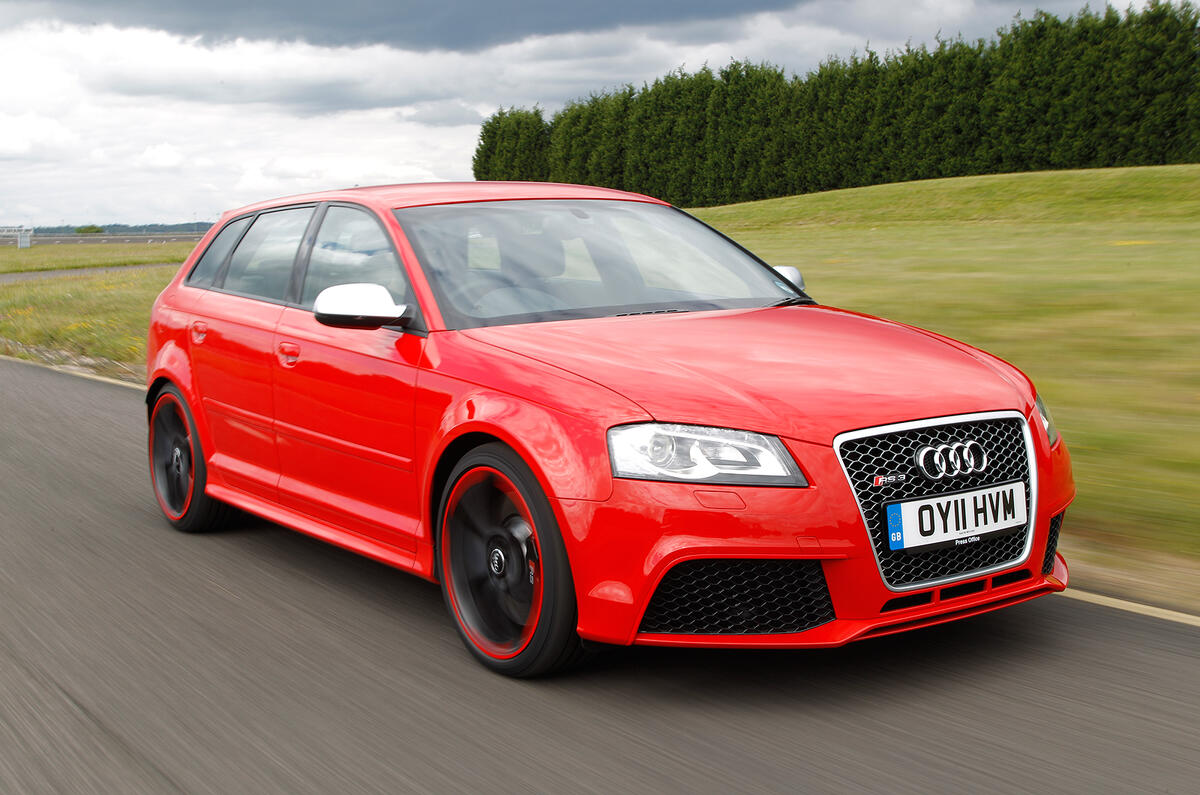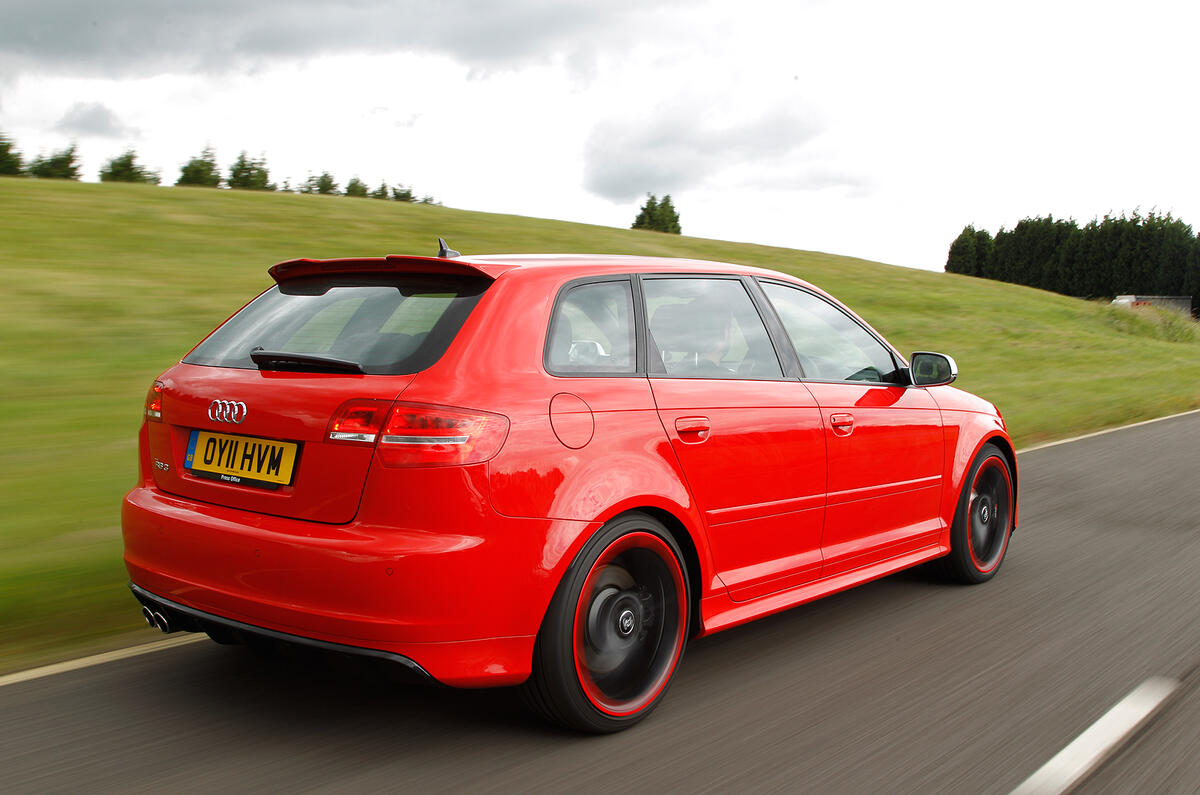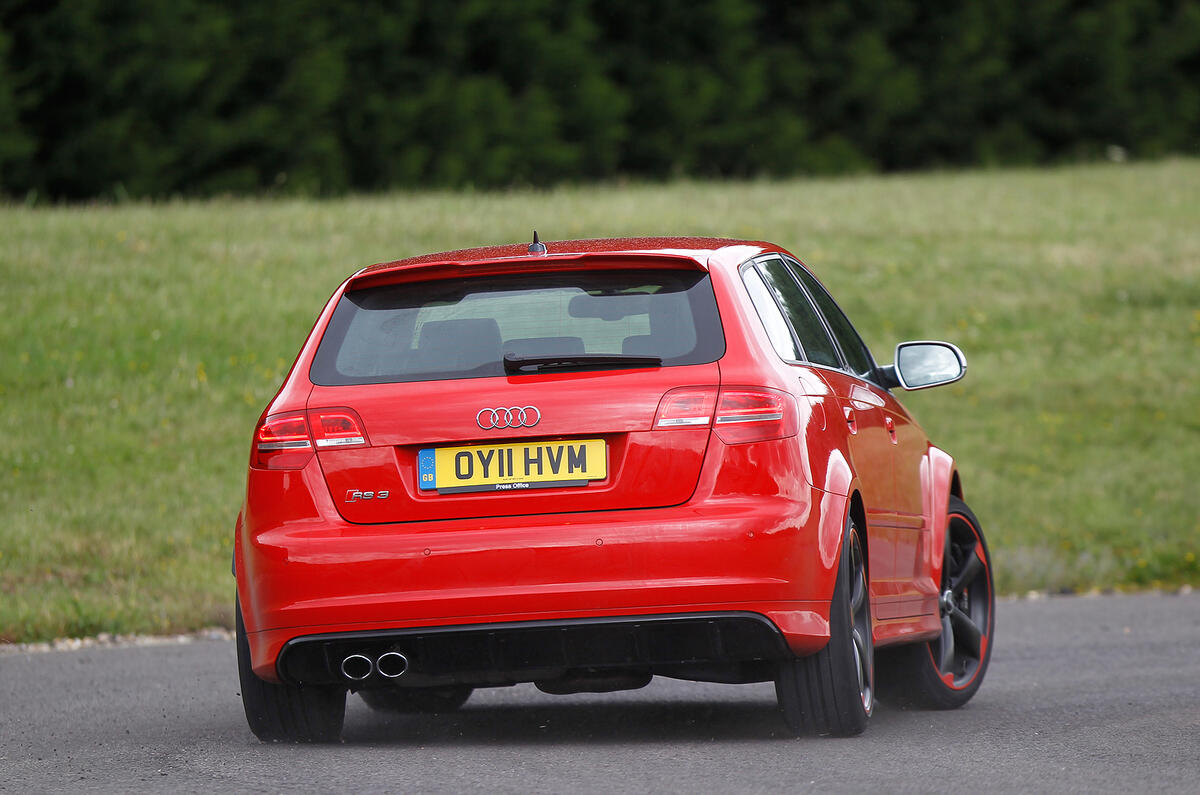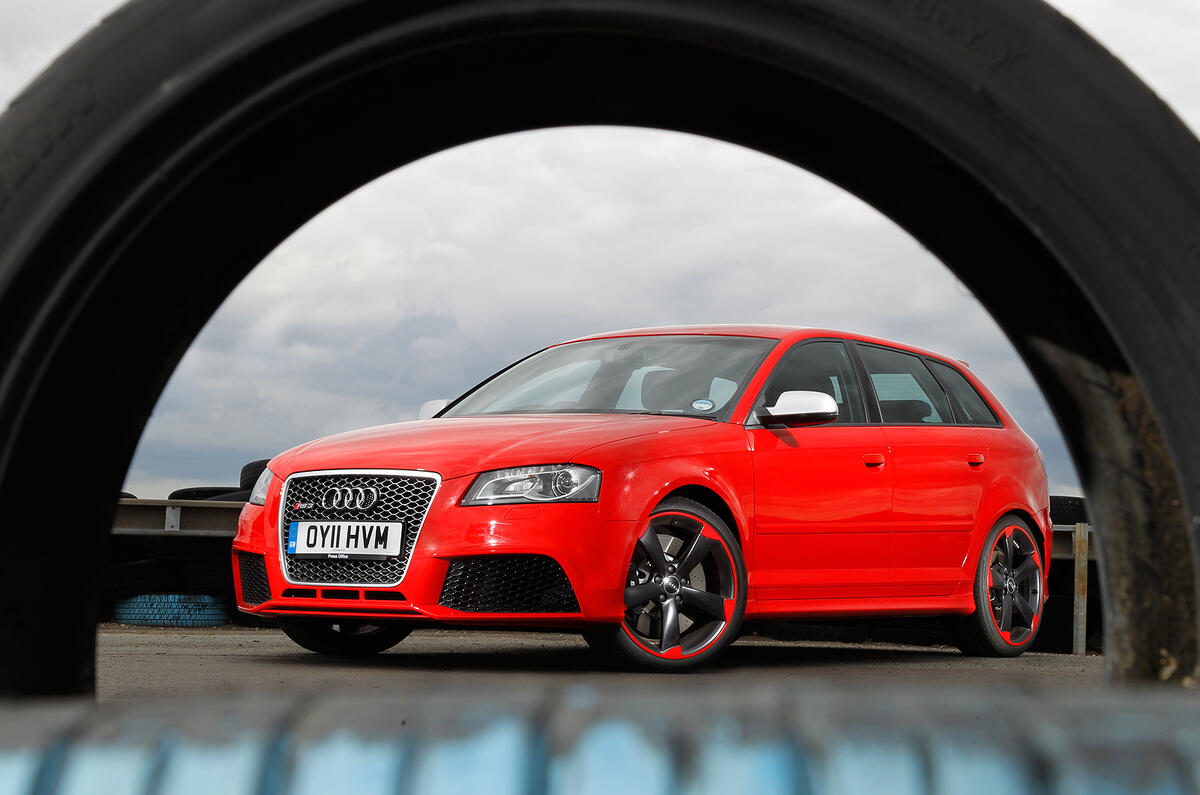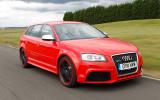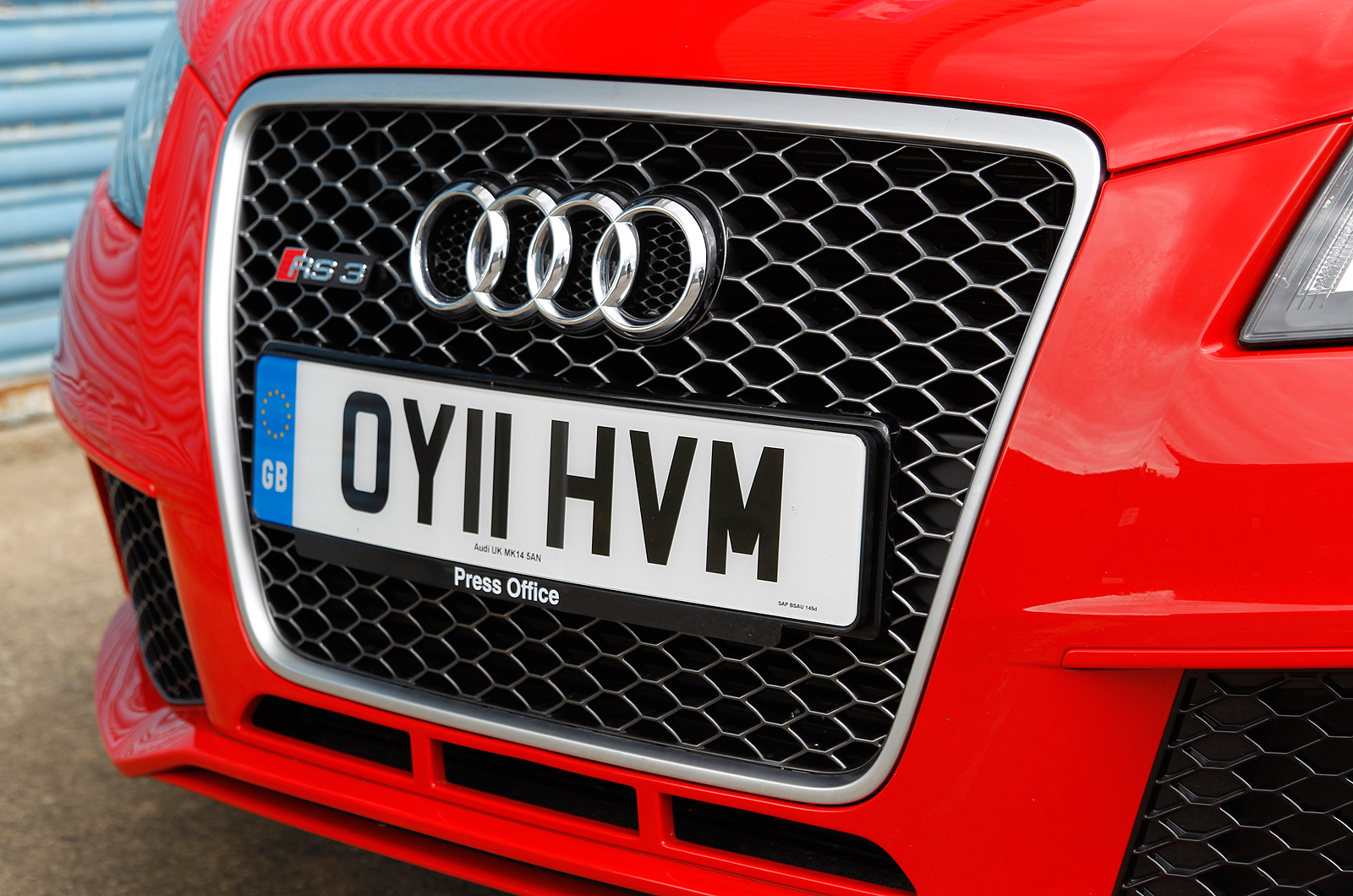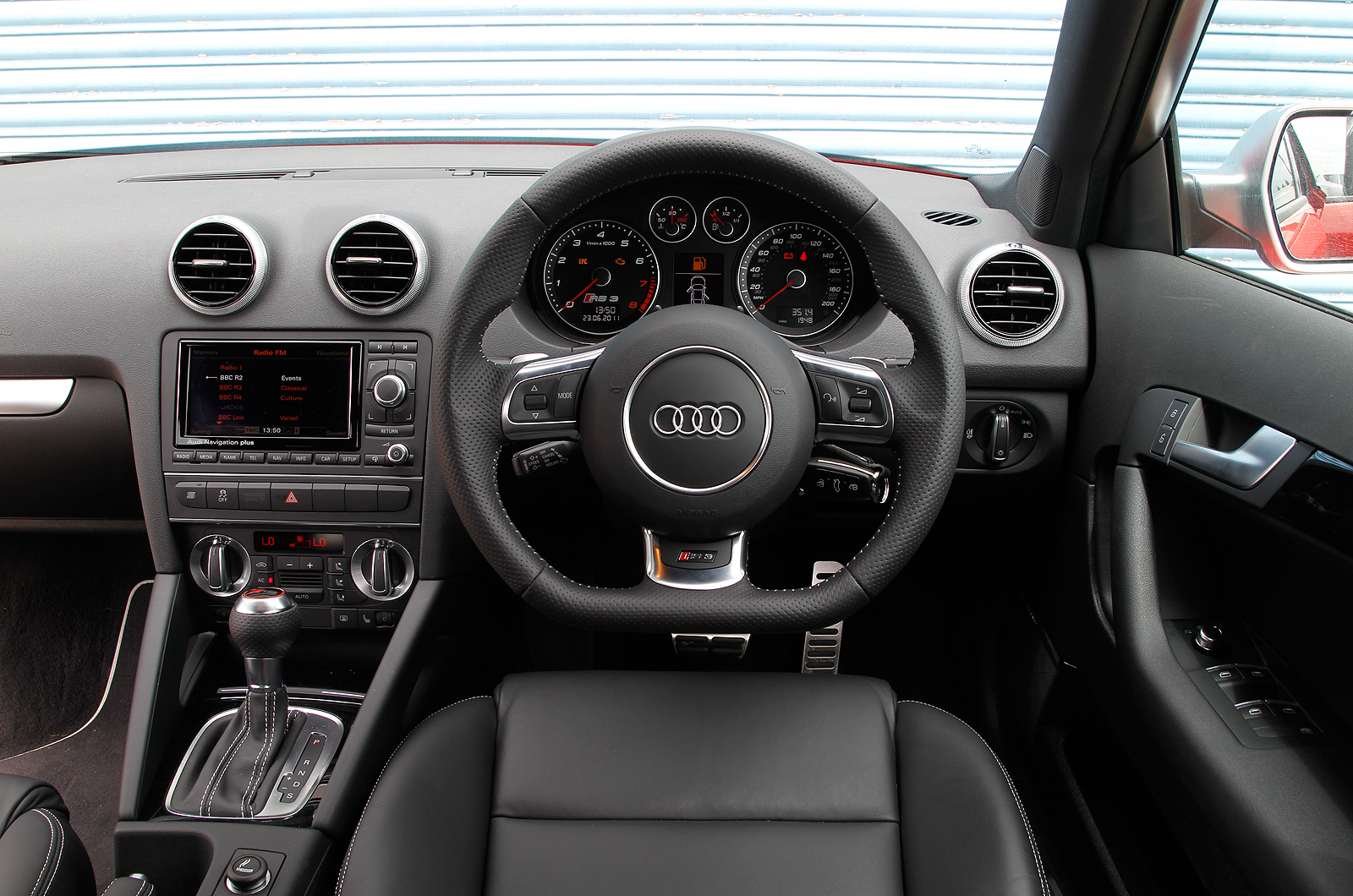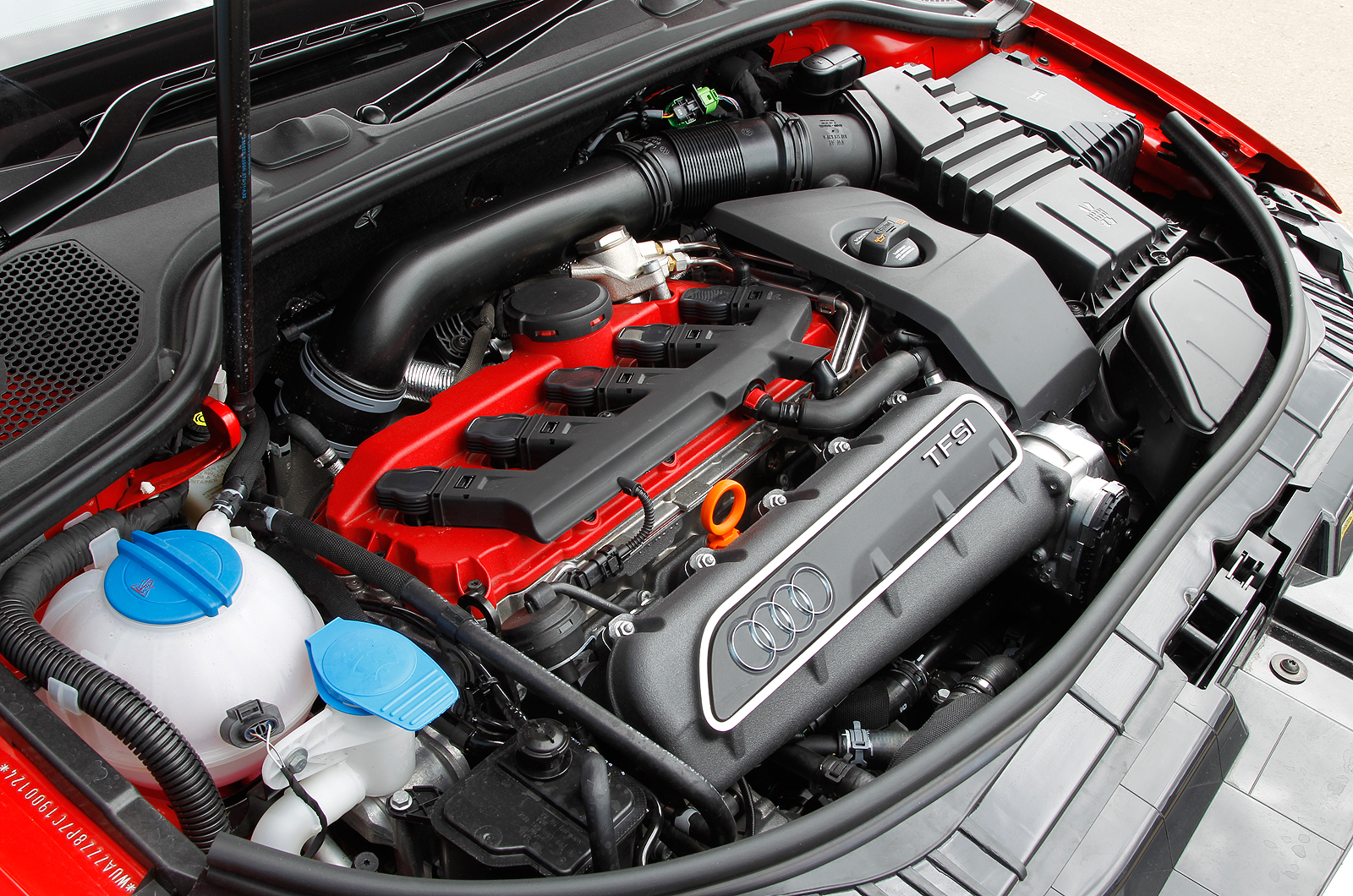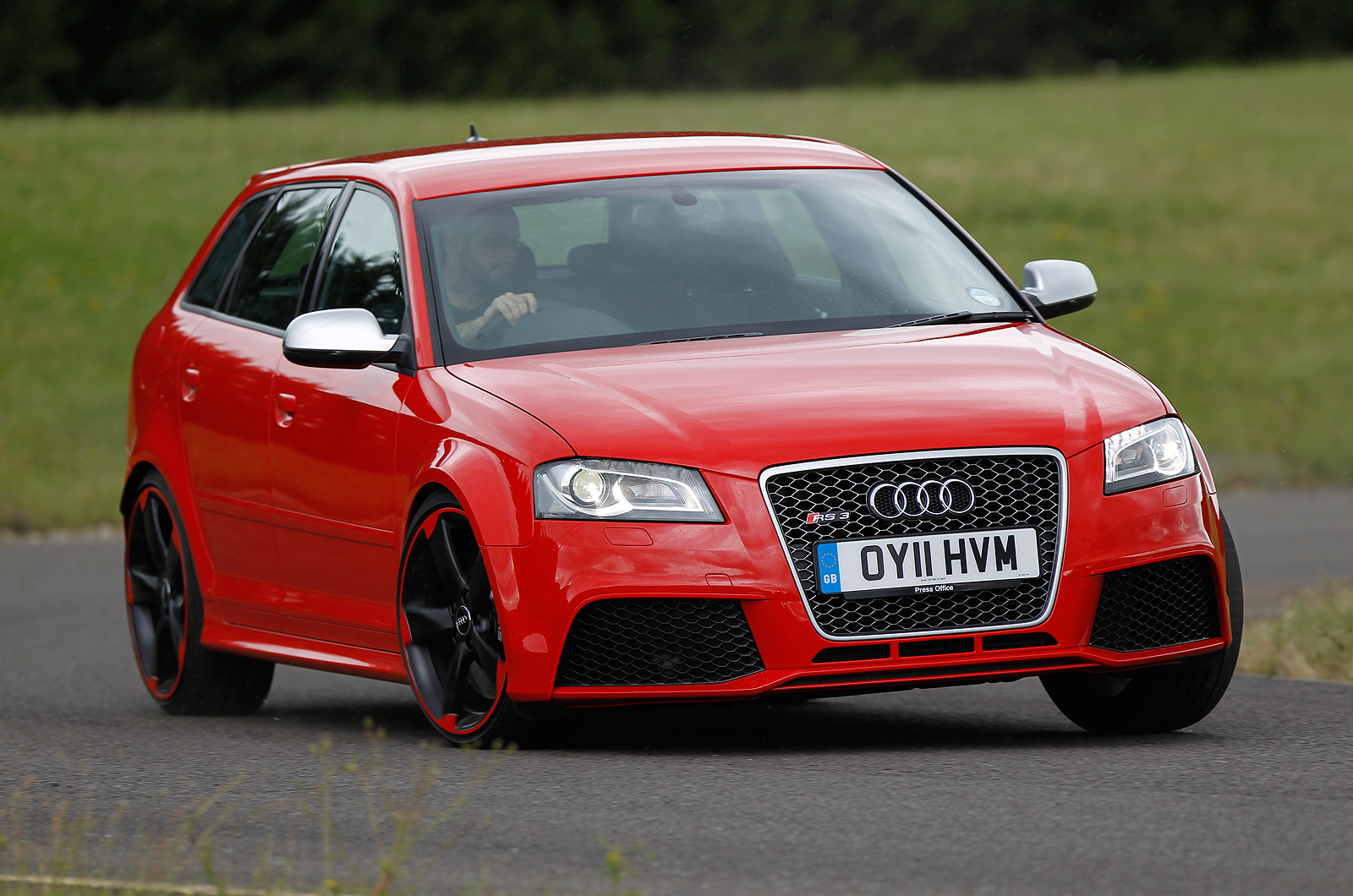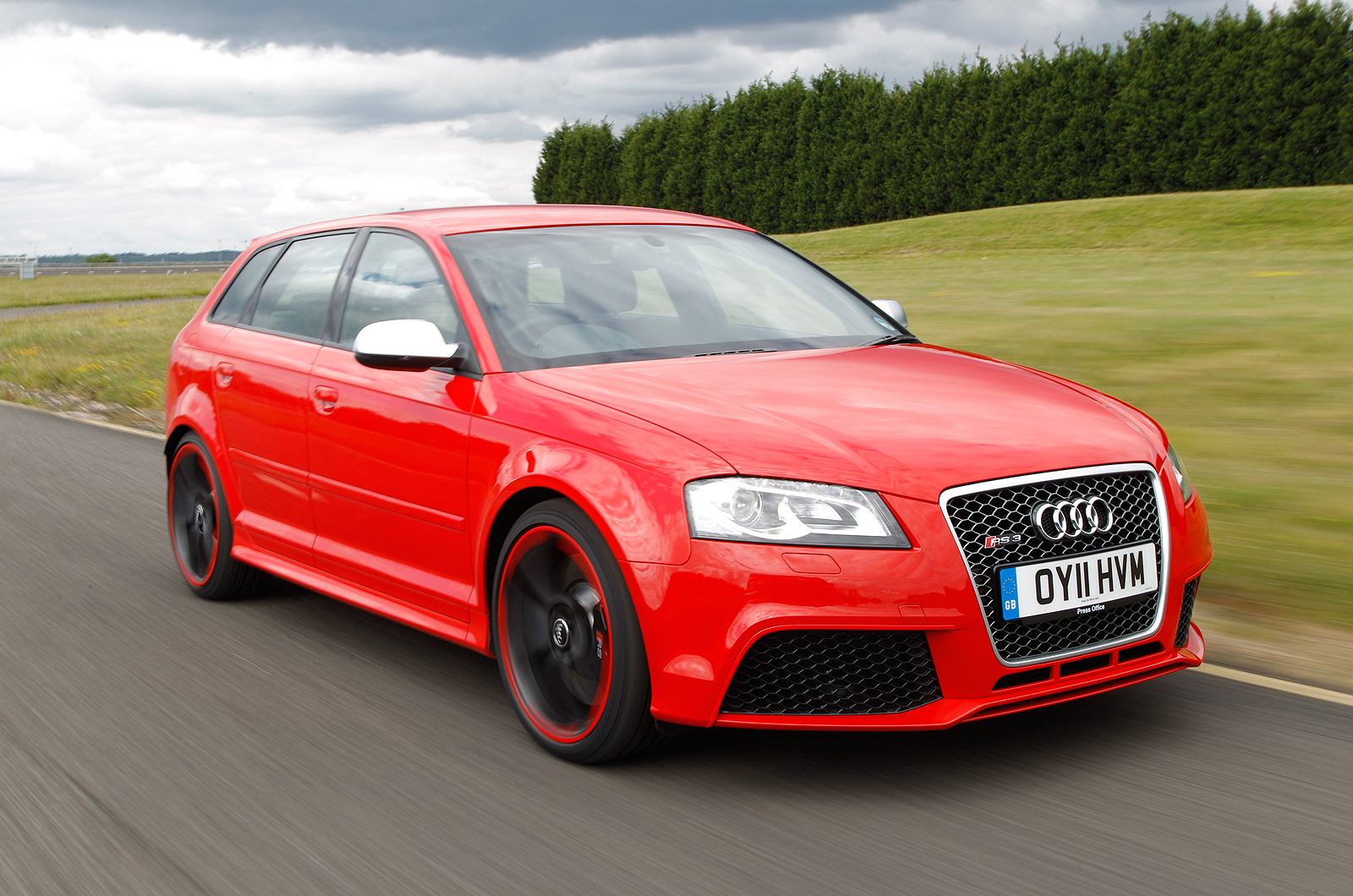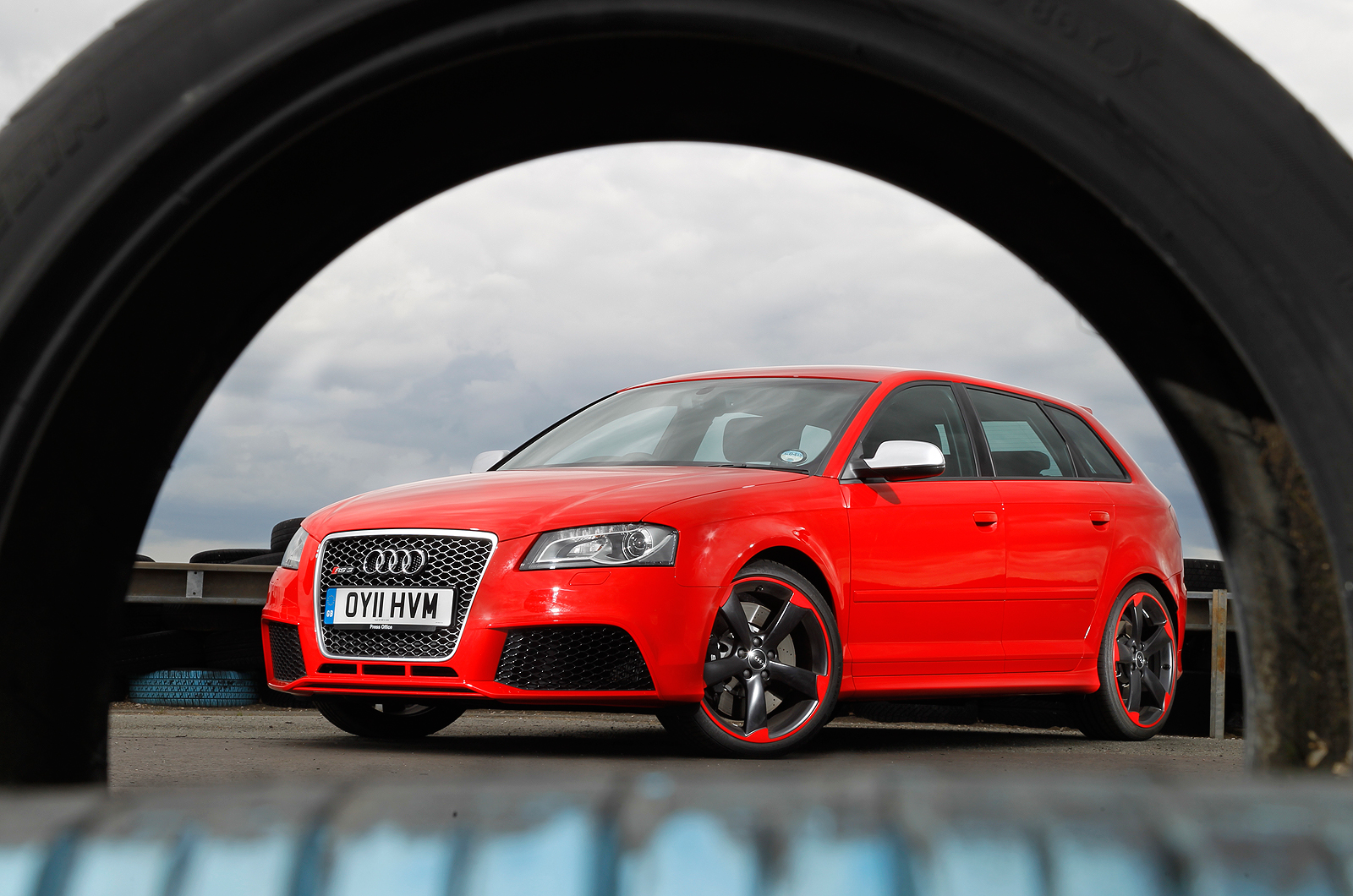Powering the Audi RS3 is the same 2.5-litre, forced-induction motor as in the TT RS, which produces 335bhp – a headline figure which, Audi claims, is unequalled by any other fast hatchback you can currently buy. We have seen better-endowed performance hatchbacks over the last few years, however. Ford’s special-edition Focus RS500 and the Cosworth Impreza are obvious examples.
Standard fit on the Audi is a seven-speed dual-clutch gearbox with a launch control mode, which not only means that Audi can quote a remarkable 0-62mph dash of just 4.6sec for the RS3 but also, thanks to a tall seventh gear, similarly remarkable economy and emissions performance (31mpg combined and 212g/km).
When we first drove the TT RS, we hoped that its 335bhp five-cylinder motor would get another airing, and we’re delighted that it has one here. And it’s official: with performance such as this, compact hatchbacks have joined all-out sports cars in becoming ludicrously rapid.
How fast? At one end of the straight at MIRA’s test facilities, there’s a run-off area with a dusty surface, allowing a touch of useful wheel slip at take-off. Sit the RS3 on the loose stuff, place its dual-clutch gearbox in Sport, push hard on the brakes with your left foot and the software will automatically allow a launch control start. Burying the throttle disengages the clutch and holds the engine at around 3500rpm.
Side-stepping the brake, one-up and without too much fuel on board, our test RS3 reached 60mph in a remarkable 4.05sec in one direction. The test figures we quote for cars are recorded two-up and with plenty of fuel, yet still the RS3 will reach 60mph in just 4.5sec over a two-way average.
Curiously, though, this doesn’t translate to a feeling that the RS3 is overpowered on the road. Perhaps it’s because the wet-clutch gearbox feels slightly slushy, or it’s drag from the 4WD drivetrain, but you’d swear the Audi was no more powerful and rapid than a Ford Focus RS. Certainly it’s less immediate and vociferous.
Its engine, meanwhile, makes a tuneful but muted five-cylinder thrum that we wish was allowed to be louder. Acceleration from low revs builds gradually despite the big slugs of torque available, with the engine doing its best work through the mid-range. If anything, the RS3 feels like a moderately faster last-generation Focus ST in its delivery.
Ultimately, though, ask a lot of the RS3 and it delivers. The numbers don’t lie, and the RS3 is – accelerating through the gears or in gear – a match for anything at the price.
Do the RS3 and its peers need to be this quick? Undoubtedly not. Is it amusing that they are? Often, yes. But we can’t help thinking that compact hatches like the RS3 do not need to be heavier and more powerful than the original Audi RS2. And should emissions regulations force them to become lighter and use less powerful engines, it would be no bad thing.



